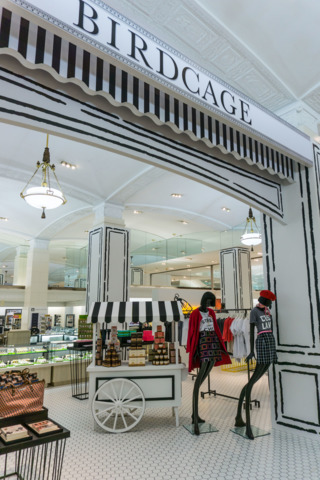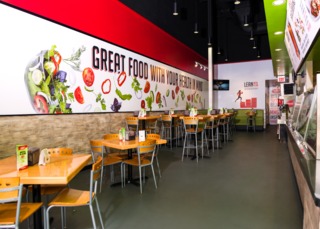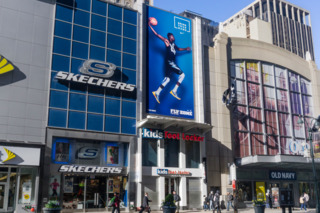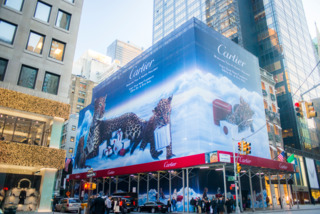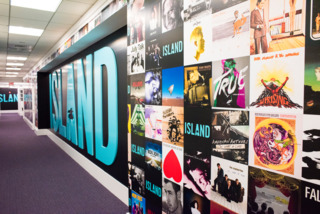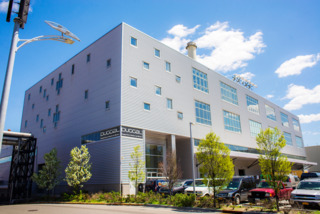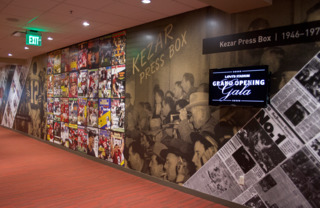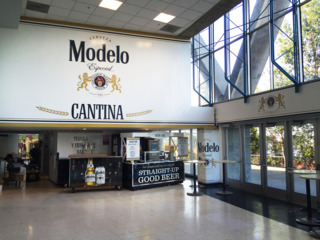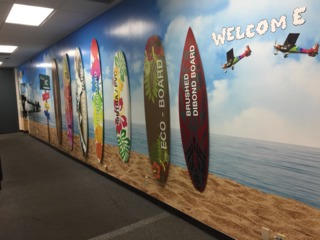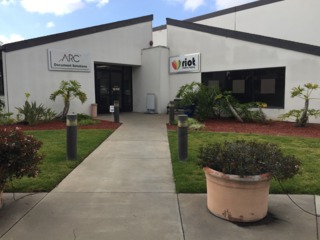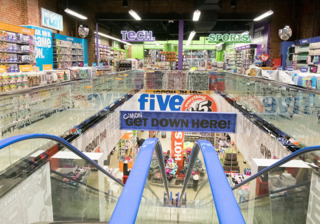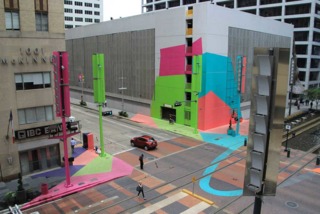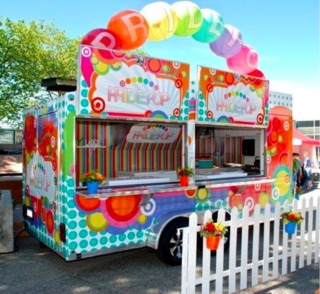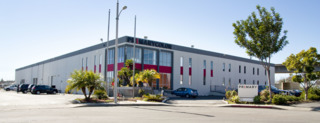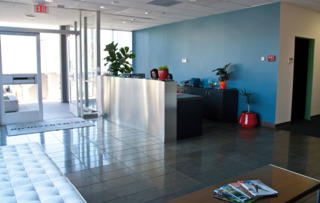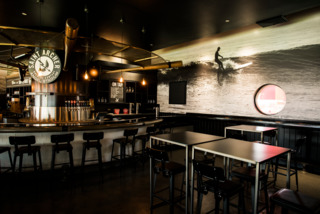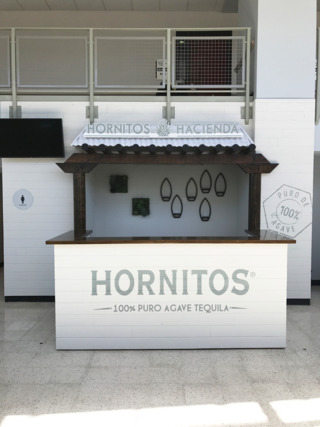Top Shops 2017: Full Speed Ahead
Shops are continuing to show dramatic growth – but are there speed bumps ahead?

Our Wide-Format & Signage Top Shops again had a banner year in 2016 – the 60 Top Shops reported cumulative sales of more than $882M last year, a sizeable increase of nearly 22% versus the previous year. This builds on last year’s growth, when shops reported a growth of 13% over the previous year.
And, impressively, shops are showing no signs of letting up: One quarter (25%) of our Top Shops indicated they had plans to open a new location in 2017. In addition, they’re pushing forward by planning to add new applications and technologies – helping them broaden their client base and further differentiate themselves from their competitors – including fabrics/textiles, décor, wallpaper, vehicle graphics, and 3D/dimensional printing.
Our #1 Top Shop for this year: Coloredge Inc., in New York City, has now grabbed the top slot in our Top Shops List for the fourth consecutive year.
“Our ultimate goal as a company is to help upscale brands and retailers merchandise their products through the best visual marketing available,” says Jeb Ball, president of Coloredge. “We do whatever it takes to continually stay ahead of our clients, by keeping our eyes out for innovative technologies and services.”
His advice for other shops: “Embrace chaos. Our clients – which include many of the world’s best-known brands – are confronted with competitive challenges and constant change. They count on Coloredge for the experience and resources to make the impossible possible. Taking a ‘Don’t worry, we’ve got this’ approach has helped us create enduring relationships with our clients. At the end of the day, we’re not just a technology company. We’re also a mattress company. We sell a good night’s sleep.”
Rounding out the top 10 in this year’s Top Shops:
- Vision Inc. (2)
- Duggal Visual Solutions (3)
- Primary Color (4)
- Diadeis (5)
- Hatteras (6)
- ARC/Riot Creative Imaging (7)
- Candid Litho/Worldwide (8)
- Rand Graphics (9)
- Image Options (10)
Analyzing the numbers
Fifty-seven percent of this year’s Top Shops identify themselves as a Digital Color Shop/Digital Printer. The remaining shops are split between: Sign Shop (15%), Commercial Printer (8%), Service Bureau (7%), and Reprographic Shop (3%); 10% indicated “Other” (with descriptions ranging from “screen printer” and “digital fabrication specialist” to “visual marketing solutions provider” and “creative production agency”).
The average age of the shops in our list is 38.5 years, with our oldest founded in 1910: Filmet Color Laboratories, Inc. in Cheswick, PA. Holland & Crosby Ltd. In Mississauga, Ontario, is the second-oldest firm in this year’s Top Shops, founded in 1932.
Among the youngest shops on this year’s list: Yotta Sky in Miami, FL, founded in 2012; Chicago Print Group in Chicago, IL, founded in 2013; and ARC/Riot Creative in Costa Mesa, CA, founded in 2009.
This year, we have 15 shops with 50 or more years in business: Vision Inc. (2), Duggal Visual Solutions (3), Candid Litho/Worldwide (8), Rand Graphics (9), Holland & Crosby (12), Yunker Industries (13), Visual Marking Systems (17), Sharpe Co. (18), Vision Graphics (19), NGS Printing (23), ICL Imaging (27), Cushing (29), Alabama Graphics (30), E.H. Teasley & Co, Inc./Inkjet Printing International (31), and Filmet Color Laboratories (42).
The total number of shop locations this year is at 147 (just two fewer than last year’s total) – approximately 2.5 locations per company on average. Six of our Top 60 list indicated they have five or more locations, with Diadeis in New York City topping the list with 20 locations. ARC/Riot Creative Imaging has 15 locations; Duggal Visual Solutions and Alphaprint Inc DBA AlphaGraphics Seattle have seven locations; Primary Color lists five locations. Fifteen of our Top 60 shops indicate they are going to open up additional locations in 2017.
This year’s Top Shops offer a range of capabilities and services, color as well as black-and-white graphics. On average, 53% of output from the Top Shops is wide-format (36-96 inches in width). Grand-format (96-inches plus) grabs the next largest share with 2%. Medium-format (24-35 inches) has 14% of the share, leaving small-format (14-inches and smaller documents) the remaining 7%.
Application-wise, retail/POP displays and signs are in the lead position with 21% of the overall graphics mix. Banners and signs are next in line with 17%. Décor (10%) pulls in the next largest segment of business, followed by exhibit and tradeshow graphics, fleet and vehicle graphics, and labels and decals (all at 9%). Fabrics & textiles continue their rise across our Top Shops as well as the marketplace (7%), followed by posters (7%), specialty printing (6%) and engineering and blueprints (6%). Coming in at the 5-percent mark are backlit display graphics, billboards, building signs, and electrical signs; yard/site signs (4%), fine art/museum graphics (3%), regulatory signs (2%), and other (4%) round out the rest of the applications.
Commoditization and other challenges
Despite some of the increasing sales numbers noted earlier, there remain a variety of challenges that the industry must address, say our Top Shops.
“I think the biggest challenge is the familiar specter of commoditization,” says Ball. “And that goes straight to the heart of your value proposition. Technology is advancing at a rate that continually levels the playing field. So your value proposition can’t hinge on being an ‘ink-on-substrate’ provider. You need to stay at least one step ahead of your clients and your competitors. And the way you do that, the way we’ve done it for more than 30 years, is by remaining relevant, by reconceiving our secret sauce, and by re-imagining how to approach creative challenges.”
Agreed, says Ken Madsen, executive VP, global strategy, Diadeis: “The [biggest challenge we face is the] race to the bottom – commoditized offering. We need to be smart about building value around square-foot pricing. We have to bring innovation and other value propositions to the table. We cannot just sell on square-foot price. Help the brands manage campaigns and introduce innovations – you have to earn it.”
“There are too many vendors [and so] pricing is getting destroyed,” says Howard Weinstein, co-owner, Candid Litho/Worldwide. “If the industry on a whole does not stop low-balling on the pricing of work, it will further hurt the print industry overall. Owners of companies need to spend time looking at what their true costs are. We are in a total reorganization over the next 6 months, melding both sheetfed and large-format into one working environment.”
Commoditization is often a factor of many shops adhering to the traditional order-taking model, says Marc Lovci - VP of business development with Duggal: “The biggest challenge is becoming part of the conversation early enough in the project cycle to make a difference in planning. Too often, Duggal is honestly facing the failure of other service providers who are unwilling or unable to break a pure vendor/order taking model – which pushes a sub-par expectation to buyers based solely on price for materials and production cost. We are challenging that model again, and again, and hope that as the best client stakeholders inevitably move to other progressive brands, they will bring that thinking and expectation to the print industry professionals in that market.”
The future, technology, and people
How can print service providers best prepare themselves now for the industry’s future? What speed bumps and stumbling blocks might be ahead to curtail the growth the market has been experiencing?
“The future of print is not in volume of production,” says Lovci, “but more heavily reliant on challenging clients to look at the most effective and efficient solutions in communicating their brand message to targeted audiences and individuals.”
At Diadeis, says Madsen, “Our clients lean on us to test and kick the tires on any innovation that might bring value to the brand. Part of our offerings is to exploit and make the brands aware of innovations that can ignite interaction, activation, engagement, etc. The industry’s future is connecting static visuals to digital and augmented environments. Imagine having the ability to embed a hidden code in every graphic and having the ability to manage, push, and pull content to a consumer. Take it even further -- to have the ability to run campaigns, offers, contest, scavenger hunts with static graphics that link you to the web. If I’m a marketer trying to be creative with new ways to active engagement with a consumer, it’s possible. We can do this now.”
“First, whatever you do, don’t define yourself as a print-service provider – once you do that, you’re playing in a very small box,” says Ball. “I’ve always considered printing a technology play. From clay tablets, papyrus, and moveable type, to lithography, offset, thermal, and digital printing – the technology is always evolving.
“We don’t expect our clients to know all the available technologies and how to bring visual concepts to life,” he continues. “That’s our role as a service provider. We take gorgeous digital images and employ a wide array of technologies to transform bits and bytes into super-high-fidelity retail visual experiences. So it’s up to service providers to stay ahead of their clients and embrace the latest available technologies.”
Indeed, embracing the latest technologies is at the top of many shops’ lists. When our Top Shops anticipate which technology will most impact their businesses in the next 12-24 months, the hands-down winner is workflow automation – nearly 20% of the Top Shops noted it. Other technologies the Top Shops believe will impact their business in the near future include: online portals/storefronts/ecommerce; UV print technologies; electronic/digital displays/digital signage; fabric printing/soft signage; variable data; and single-pass print technology.
The industry changes so quickly, “It’s hard to keep customers and sales abreast of all the new substrates and technologies available,” says Dan Hirt, president of Primary Color. “Be early adopters of new technology,” he says, to gear up for the future. “Primary is really focused on expanding our technology and offering automated solutions that enable our customers to streamline their marketing operations. We aim to become an integrated partner with our customers, not just another vendor.”
“Print providers need to stay on top of technology and how it impacts visual communication,” says Lisa Mawson, director of operations, ARC/Riot Creative Imaging. “There’s increased competition – everyone is getting into color. We address these challenges by staying on top of technology and providing quality products and services.”
Beyond the technology, however, are a company’s employees. This year’s Top Shops indicate that the majority of their employees (19%) are on the output side of the shop, followed closely by finishing (17%). Other department breakdowns include: prepress (12%), customer service (9.5%), sales (8%), and management (7%).
Those companies that are putting an emphasis on finding new talent are setting themselves up for future success, says Lovci. “Duggal is very aggressive on finding talent and building our own pipeline of skilled employees – with local colleges, trade, and design schools, as well as the exceptional pool of talent found within our military veterans. Any print company not exploring these channels of growth and succession planning will find themselves shorthanded when it matters most, and in so doing, fail to meet their customers’ expectations.”
“People are our single most important asset,” says Ball. “Talent acquisition is a sustainable competitive advantage in our business. We are highly focused on attracting, hiring, and retaining inspired professionals who want to work at the vanguard of innovation. We want to connect with people who share our excitement and commitment to evolving as a visual-marketing company.”
Seeking growth
As our Top 60 Shops look toward the future, they see a variety of opportunities for growth – and, as you might guess, various ways to get there.
In looking at what applications they could add, nearly 20% of our Top Shops indicated that fabrics/textiles/soft signage would be an application that they would bolster their shop’s roster within in the next 12-24 months. Other top applications on their list: décor/custom interiors and wallpaper/wall art, plus 3D/dimensional printing and vehicle graphics.
“Growth opportunities on the wide-format side for Diadeis are going to be in out-of-home, vehicle wraps, POP/POS. and in-store visuals,” says Madsen. “There has been a shift back to traditional, coupled with new innovation to connect print to digital. One area that is of great interest is to hide codes in the graphics that consumers can scan to get more content. Leveraging this innovation yields measurement and engagement like we’ve never seen – ultimately, building the brands equity and sales.”
Dan Hirt, meanwhile, references restaurants, experiential, and décor – "incorporating digital technology into environments” – and Howard Weinstein projects that “specialty event printing throughout the industry will grow.”
“Duggal champions print as a fundamental solution in the transformation and visual engagement with any atmosphere – whether it be a trade event, out-of-home, fine-art installation, or interior design,” says Lovic. “We believe our greatest opportunities continue to lie in our ongoing commitment to integrating the newest technologies, develop their application, and educate designers and creatives in how to implement across all industry and solution channels.”
Ball echoes those “any atmosphere” thoughts: “Our ultimate goal as a company is to help upscale brands and retailers merchandise their products through the best visual marketing available. We do whatever it takes to continually stay ahead of our clients, by keeping our eyes out for innovative technologies and services. Anything that will help us create powerfully distinctive brand experiences is a worthwhile investment and a growth opportunity for Coloredge. If that means investing in 50 Durst Rhos, we’ll do it. If it means developing a way to blend graphical, dimensional, and digital elements into a rich sensory environment for a client, that’s what we’ll do. This mindset has helped to fuel our growth and distinguish Coloredge in the market.”
[pie chart?]
Breakdown of Top Shops
Digital color shop/digital printer – 57%
Service bureau – 7%
Commercial printer – 8%
Sign shop – 15%
Reprographic shop – 3%
Other – 10%
[sidebar 2]
Top Technologies Projected to Impact Business
(in 12-24 Months)
Workflow Automation
Fabric printing/soft signage
Online portals/storefronts/ecommerce
UV printing
Electronic/digital displays/digital signage
Variable data
Single-pass technology
[sidebar 3]
Sales by Application (%)
Retail & P-O-P 21%
Banners & Signs 17%
Décor Printing 10%
Exhibit & Tradeshow Graphics 9%
Fleet & Vehicle Graphics 9%
Labels & Decals 9%
Fabric & Textile Graphics 7%
Posters 7%
Specialty Printing & Graphics 6%
Engineering Drawings/Blueprints 6%
Backlit Display Graphics 5%
Billboards 5%
Building Signs 5%
Electrical Signs 5%
Yard & Site Signs 4%
Other 4%
Fine Art & Museum Graphics 3%
Regulatory Signs 2%
[sidebar 4]
Top 5 Applications Likely to Add
(in 12-24 Months)
Fabrics/Textiles/Soft Signage
Décor/Custom Interiors
Wallpaper/Wall Art
3D/Dimensional Printing
Vehicle Graphics
[sidebar 5]
Percentage of Output by Type [2016]
Small-format (up to 14 inches wide) 7%
Medium-Format (15-35 inches wide) 14%
Wide-Format (36 to 95 inches wide) 53%
Grand-Format (96+ inches wide) 26%
Percentage of Output by Type [2015]
Small-format (up to 14 inches wide) 8%
Medium-Format (15-35 inches wide) 15%
Wide-Format (36 to 95 inches wide) 55%
Grand-Format (96+ inches wide) 22%
[sidebar 6 – factoids[]
25%
Percentage of Top 60 shops that plan on opening new locations in 2017
147
Number of total current locations for all Top 60 shops
$882+ million
Total sales of Top 60 shops for 2016
8%
Percentage of total company employees (ft/pt) that make up the sales department.

